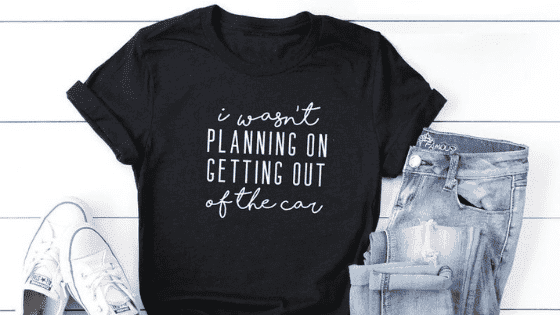Tired of Decisions? How to Make Better, Easier Choices

The thousands of decisions we’re asked to make every day as moms is exhausting. Science shows decision fatigue exists, and the consequences are just as real. Important decisions don’t get the attention they deserve. We start making bad decisions or just shutting down. There’s a way to make better, easier choices.
Decision Fatigue is Real
I stress over big life decisions as much as the next mom. But I swear it’s the never-ending grind of small decisions that leave me mentally spent by the end of a typical day.
Some research suggests that the average adult faces 35,000 choices per day (compared to 3,000 for kids). That’s a new decision every couple seconds if you take any time to sleep each day. Wowza! To be clear – this big number includes all the mundane or even subconscious decisions like whether to actually get up when the alarm rings or hit snooze, or whether to take a hair-washing shower or just dry shampoo that mane.
At least some decisions are easy. Diet Coke all the way! Who’s with me?
In terms of actual, conscious decisions each day, the number might be closer to 70. That comes out of a decade of research from Sheena Iyengar, author of The Art of Choosing and two-time TED Talk speaker. Iyengar says it takes CEOs an average of just under nine minutes to make 50% of their decisions. So to make 35 decisions, that’s more than five hours a day. And there’s still 35 other decisions yet to make. That’s a heck of a lot of time spent making decisions – and these CEOs are wired and trained to be efficient decision makers.
So, if 70 decisions a day seems to be the norm, my next question is whether this means the average mom faces more in the range of 150 decisions daily. As a working mom, decisions seem to assault me from the minute my eyes open in the morning until the last child is in bed and I’ve put away email for the night.
Some decisions are fairly simple, but annoyingly constant
- Mom, can I watch a show?
- Mom, can I wear shorts today? [When the forecast is 45 degrees]
- What should we have for dinner…every night this week…and every week after that
Some decisions carry a bit more weight, even though they’re not necessarily high stress
- Should I buy those new shoes sitting in my online cart?
- Where should we go on vacation?
- Should I respond to those emails or take an hour of quiet time for myself before bed?
- Mom, can I climb up here?
On our recent trip out west, we let the kids do quite a few things that probably could have ended badly. That’s the risk and the stress of decisions!
Other decisions pack a big emotional/financial/relational punch
- Should I step back from this stressful friendship?
- Should we allow/encourage our kid to do an activity with a hefty price tag or time commitment?
- Should I change jobs?
The combination of thousands of these big and small decisions every day is exhausting. I worry whether I’m making the right choice. I worry that if I had asked more people or done more research, I could have found a better option. I look back and regret choices, or look forward and fear making choices I will later regret. It’s a mind-numbing vortex.
Our choices construct our relationships, careers, world-views, and identities–we are the sum of our choices. – Sheena Iyengar
Our choices only define EVERY ASPECT of our lives and our family’s lives. Well geez, no pressure.
Anyone else remember this Tina Fey quote from the movie Date Night? What a spot-on statement from an exhausted wife and mom:
Consequences of Decision-Making Overload
Science has a name for the feeling we get at the end of a long day when we can’t bear the thought of one more choice: decision fatigue. Yep, it’s a real thing. The more choices we make each day, the harder each decision becomes for our brain.
This New York Times Magazine article digs more into the science and notes “every decision drains energy and willpower.” The article also highlights the shortcuts our brain will seek once it hits the point of decision fatigue:
- Reckless, impulsive decisions that don’t consider consequences
Example: me sending a not-so-nice email response at 11 p.m. because it’s my 71st decision of the day, I’m tired and can’t you just make this dumb decision without me? - Do nothing.
Example: me locked in the bathroom with my Where the Crawdads Sing book yelling “I can’t hear you, go ask your dad” to every question the kids pelt at me
But here’s the rub. I get sick of making decisions, but I still want to run the show – both at work and at home. I don’t want to carry the heavy mental burden of so many decisions, but I can’t let things go because I might not like or agree with the decisions others make in my stead. Quite the conundrum.
To combat decision fatigue, let’s take a look at better ways to make choices. Ways that leave us feeling less drained and more confident about our decisions.
Do the Next Right Thing
On her Going Scared podcast, Noonday founder Jessica Honegger recently interviewed author Emily P. Freeman about her book The Next Right Thing.
Freeman says the book is for people struggling to make decisions because of chronic hesitation or decision fatigue. Sound familiar? I like her perspective that:
“When it comes to big decisions, rarely do we just have a big decision and we make it right away. It’s a lot of tiny steps towards something. It’s a lot of paying attention to arrows rather than finding an answer.”
She says it takes a lot of pressure off to just focus on “doing the next right thing in love” and then you move on to the next thing and then the next thing.
You can also scan the transcript of the podcast if you’d rather.
Freeman also has a quiz (Kristie and I love quizzes) to help you see your decision-making style: do you lead with your head, your heart or your intuition. [Note: you do have to give your email address to see your results.]
Turns out I’m a head-centered decision maker, though if I get a bad gut-instinct about something I won’t do it.
Consider What Decisions Matter Most
Every single person gets 24 hours each day. That’s it. Our mental energy and capacity to make decisions are also finite. Entreprenuer.com will tell you that Steve Jobs wore the same outfit every day so he never had to spend time or decision-making energy on what to wear (same goes for Mark Zuckerberg and his gray T-shirt). Former President Barack Obama limited his low-priority email responses to Agree, Disagree or Discuss to reduce the mental burden of responding.
Let’s steal this bottom line from the business world: not all decisions are created equal. They don’t all deserve your limited mental energy, and it’s worth taking the time up front to identify which ones do and which really don’t.
We wrote a post a few months ago about choosing family values (it includes a printable PDF with a step-by-step exercise to walk you through if this is something you would like to do with your family). When you face decisions that intersect with your family values, those choices are worth more time and effort.
When I wrestled with the decision to leave a full-time and stable corporate job for a teaching position on a year-to-year contract, my husband and I ultimately decided that the additional time it would give me with the kids aligned more with our family values than the security or income of my existing position. My husband declines evening work events when they conflict with coaching the kids’ sports teams if at all possible. I’m sure this means some level of consequence for him professionally, but we accept that.
Keep your values and top priorities front and center when making decisions. This will help you prioritize what deserves your valuable attention.
My husband and I decided to take a vacation to celebrate our 15th anniversary and my 40th birthday. It meant we missed an orchestra concert for our oldest and a preschool play for our youngest.
Embrace Routines and Systems
Lots of daily decisions belong in the low-priority category. Routines and systems can minimize or even eliminate unnecessary decisions. This includes things like meal planning – and we’re talking about a plan that runs on a constant loop to drastically cut down on required decisions (we have a meal planning guide for working moms that will give you a head start here).
Overarching family rules like these can also trim the fat here:
- No TV on school nights
- Only one activity per kid per season
- Mom cooks, Dad does the laundry
- A monthly eating-out budget. When the money’s gone, you don’t go out
Plan Ahead and Do What You Plan
If science show decision fatigue will eventually hit, then we need to make important decisions earlier in the day. This doesn’t necessarily mean first thing in the morning. Our recent post about getting up earlier not always being the best choice points to some interesting research about the differences in each person’s “best” time of day. Check it out to identify your optimal times and plug important decisions into those time slots.
Keep in mind that being tired, hungry or angry – any level of hangry, really – links directly to poor decision-making. If you’re in this zone, defer decisions short-term until you’re in a better position.
My husband and I keep trying to create a routine for going over our finances. We’ve talked about setting aside one evening a month dedicated to this for, well, many months. And it never happens. The light bulb went on as I was writing this post that even though I’m a night owl, I am at decision fatigue point by late evening and just cannot seem to follow through. I have no problem getting online to clean out email or do some writing at night as long as I’m working quietly on my own, but I am not patient with people or with topics that stress me out – like money. I think the conversation would actually happen, and probably be way more productive, if we schedule a weekend morning and commit to that appointment.
Fail, Reflect & Go for the Rebound
Sometimes we’re going to make bad decisions. Could be on small things of little consequence or epic fails with serious repercussions. Regret – or even fear of regret – can become debilitating. Bad decisions are part of the human condition. No amount of research or processing or worrying ensures we’ll make the right call every time. But there’s a lot of power if we can pivot quickly and mentally rebound once it’s clear we’ve made a poor choice.
Michael Jordan didn’t make his high school varsity basketball team as a sophomore and then went on to become one of the greatest basketball players of all time. Steven Spielberg was rejected from film school twice, and then, well…E.T., Indiana Jones, Saving Private Ryan. If this feels inspiring, check out How Walt Disney, Oprah Winfrey and 19 Other Successful People Rebounded After Getting Fired. One, or many, bad decisions don’t equal a failed life.
My friend who blogs at Still Chasing Fireflies posted this image. She couldn’t find the original source, nor could I. But .
In my previous job, I contributed to a couple poor hiring decisions – one a temporary staff member and one a full-time employee. Several factors went into these decisions that probably should not have in hindsight: being short for time and in need of manpower, and wanting to give someone a bit down on her luck a chance.
For the short-term staffer, the situation really involved more reflection and lessons learned because her employment had a set endpoint. Never again in my career have I hired or supported the hire of someone I didn’t feel was 100% suited for the job. It doesn’t matter if we are desperate for help or in a time crunch – the wrong person is worse than no person.
The situation was stickier with the full-time employee. It felt hurtful and wrong to recommend that an employee be let go, even if she couldn’t do the job and didn’t fit the culture. But the longer she stayed, the more damage was done for both her and the rest of the staff. We needed to correct the hiring mistake and start moving in the right direction again.
At SALT effect, we talk quite a bit about reflection. Probably because this is not my strong suit, and I want to get better. Taking time out to stop and think back and consider what worked, what didn’t and why puts us in a better position to learn from the past and make better decisions in the future. It turns the mistakes into learning experiences. Kristie and I try to do that in our business. If something isn’t working, we look at the reasons why and consider better ways to move forward even when it means shelving an idea we like.
I certainly don’t know the future for SALT effect, but choosing to start this business has been a great decision in many ways. It cracks us up that this picture of us volunteering in hair nets is still one of the most popular we’ve ever posted.
So my next big decision? Whether to actually get the dog the kids have been asking for. We’ve had one in the past, so I know what I’m in for, though I didn’t have three kids at the time. Keep in mind I’m a head-centered decision maker, so send any pros and cons my way. Though I have a suspicion this decision might end up being heart-led.














“Keep your values and top priorities front and center when making decisions. This will help you prioritize what deserves your valuable attention.”
This is everything.